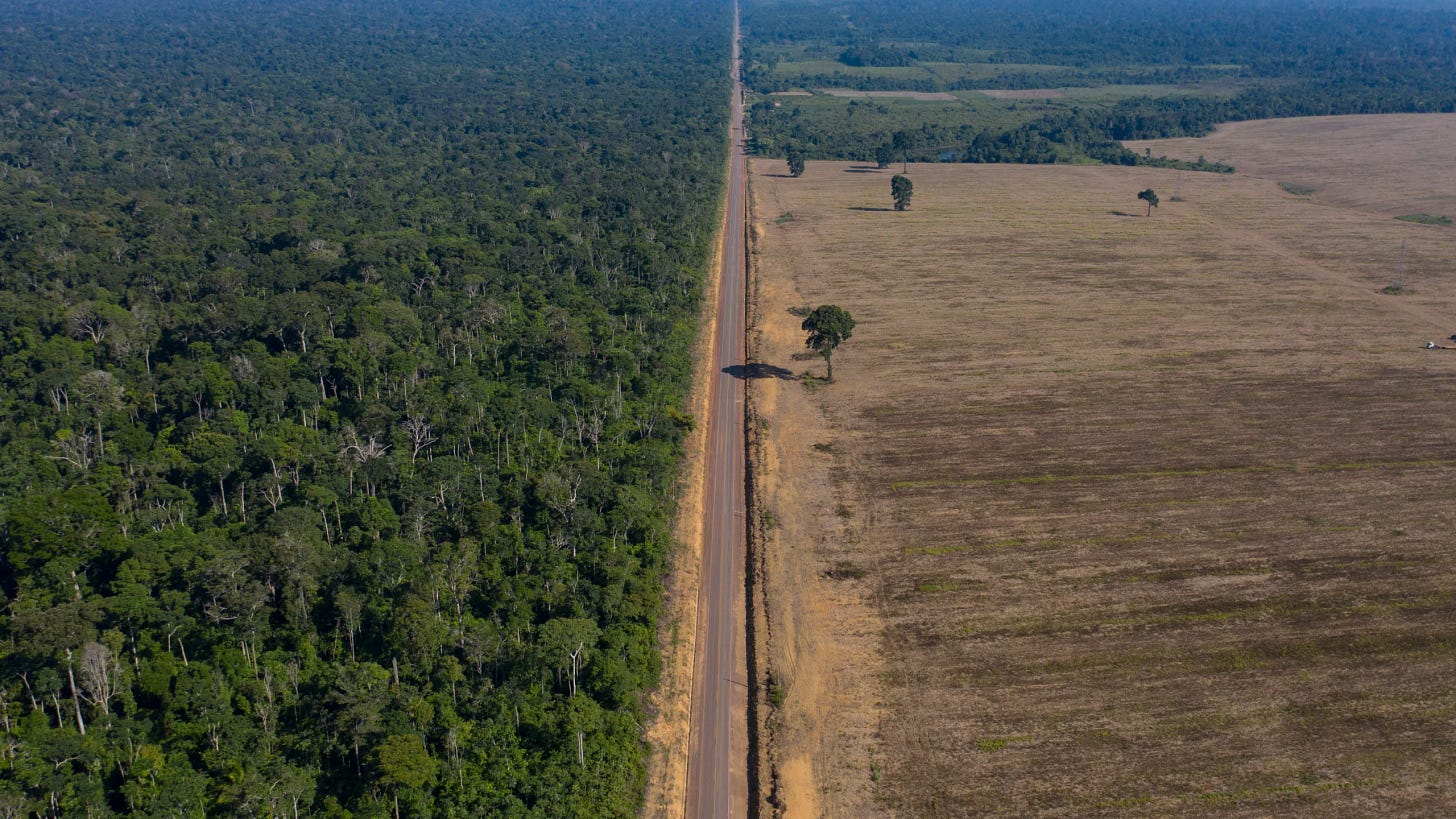Nature, Climate, or Justice
Occasionally in harmony, often at odds.

It is a truism in the climate industry that efforts to mitigate climate change, halt biodiversity loss, and spur human flourishing go hand in hand. In this understanding, there are no tradeoffs to be made when addressing these three problems. Phrases like ”a just transition” or ”the twin climate and biodiversity crises” imply that these issues are simply different facets of the same struggle.
This is wrong.
Shading over Deserts
Historically, deserts were considered wastelands alongside wetlands, tundra, and mountain chains. Because they were not fit for agriculture, they were therefore not fit for man. We would have transform them into places fit for human consumption.
To the nature lover, however, deserts are a delight. Their austere face draws you in, allowing you to meditate on the grand cosmic cycle of life and death and consider how it applies to you personally. They are also havens of life, even if we cannot always see it. Saguaro cacti, greater roadrunners, biocrusts, Gila lizards, desert foxes: these unique creatures can be found in no other ecosystem on Earth and make a grand life out of what we consider the most inhospitable of places.
Yet, in the rush to rapidly transition to so-called “green” energy, deserts are once again wastes—purely useful insofar as they can be exploited. Not for minerals this time, but for surface area.
Last year, the federal government announced an ambitious plan to turn the Great Basin into a giant solar facility. Vast stretches of federal landholdings in Nevada, Utah, and California were to be paved with silicon to provide electricity for man. In practice, this looks like thousands of Joshua trees being cut down and incinerated, desert tortoises being forced from their one-square-meter territories, and desert fox kits being removed from their dens to make way for artificial shade.
How is it not obvious that addressing climate change in this context comes in direct conflict with protecting biodiversity at its most tangible, local level that you can see, touch, smell, feel, and taste?
Starving the Global South
Net-zero goals have an unstated assumption embedded in them. In these scenarios, the Global South is to be starved of oil & gas, the most abundant, energy-dense, and cost-effective energy resources ever discovered on this planet; the very same resources that enabled the extremely rapid economic growth of the Global North.
In the name of addressing the global problem of climate change, the Global South are to be guinea pigs in the grand experiment of a light-speed “energy transition,” the scale and speed of which has not previously been witnessed in human history. Somehow, these countries are expected to bring their citizens’ standard of living up to that of the developed world, but without the energy sources that enabled that blessed billion to do so in the first place.
The Global North caused the problem, now the Global South is being handicapped in their just struggle for better lives.
Does anybody really believe that the variable power provided by solar and wind, backed up by yet-to-be-invented large scale battery storage, will be able to completely eclipse the baseload power provided by the oil, natural gas, and coal in these emerging economies? Why should they take that bet? Would you, if you were in their shoes?
Wherefore the just transition?
The Point
The take away from these examples is not to bash the idea of trying to address climate change. It is happening and will have negative consequences for humanity and the natural world we are embedded in. The point is that we should be conscious of the tradeoffs we make, both socially and individually, in the way we address the issue.
The view that the problems of nature, climate, and justice are all part of the same struggle can all too easily shift into the idea that any initiative meant to address one therefore addresses the others. This is simply not true. These issues are not puzzles that have clever solutions in which everyone wins.
Taking a more realistic and pragmatic view on these tradeoffs will enable us to actually address the problems we care to solve. We must be discerning about what we’re choosing and what we’re sacrificing when we make these decisions. Otherwise we’re just lying to ourselves about what we’re actually doing.


